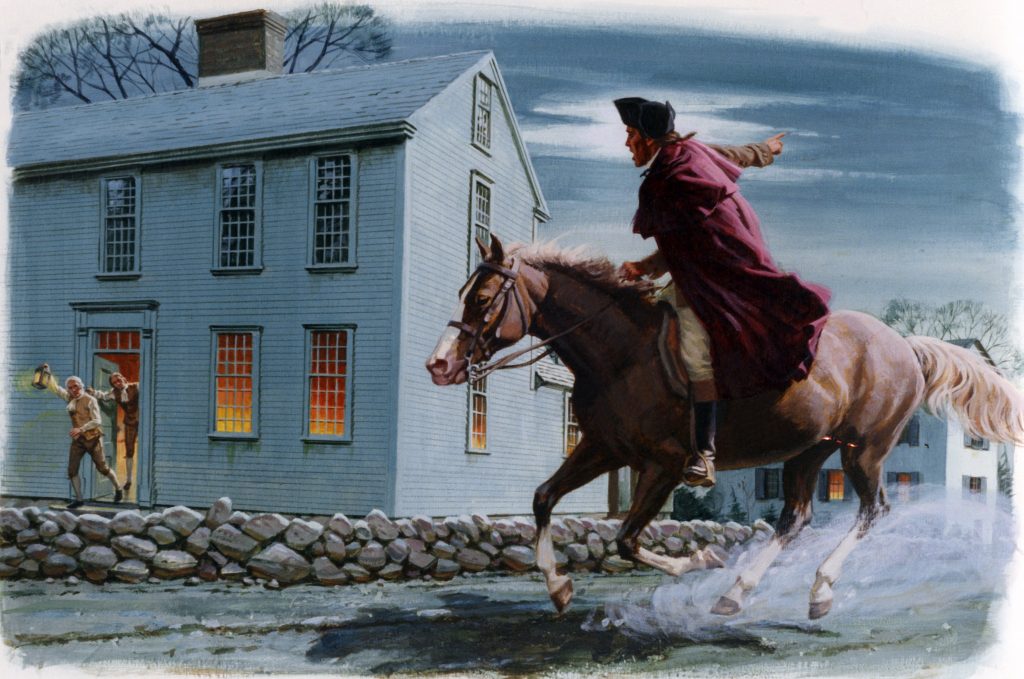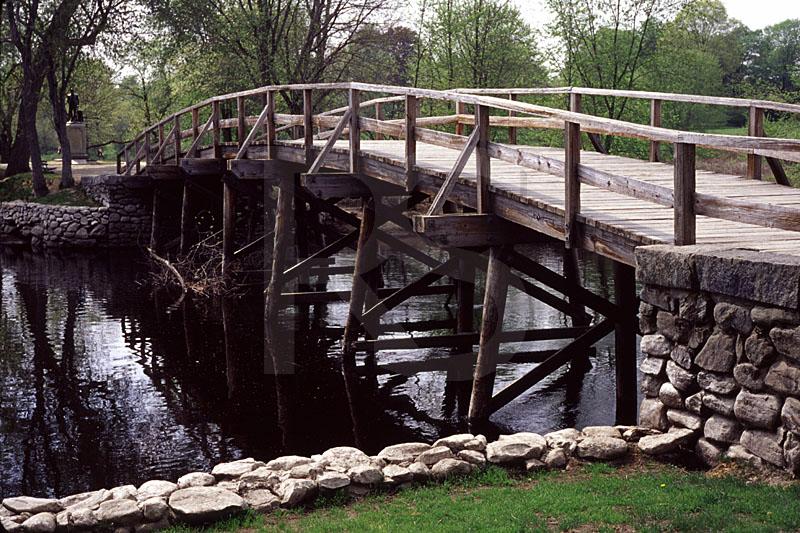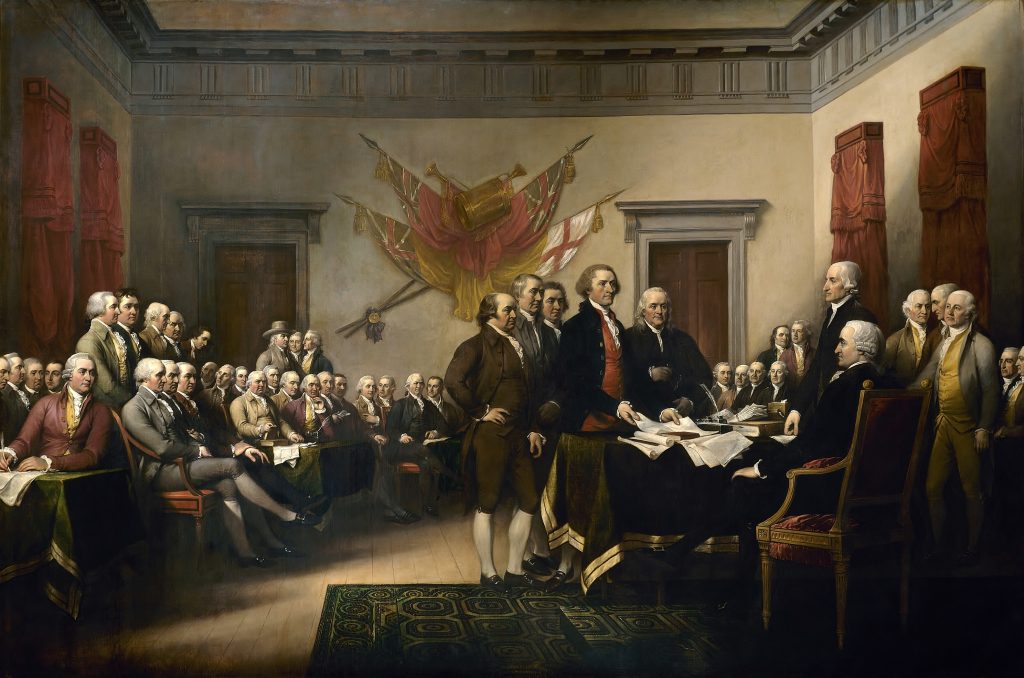
PHOTO: youtube.com
Last week on Battles That Made History, we talked about the famous Battle of Tours. Tours took place in AD 732, and was the battle that single-handedly stopped the advance of the Umayyad Caliphate into Western Europe. This week, we’re covering the two skirmishes that began the American War for Independence: Lexington and Concord.
The Brewing Storm

PHOTO: howstuffworks.com
Tensions were high between American colonists and British troops in the year of 1775, just one year before the Declaration of Independence would be signed. Talk of revolution was whispered throughout the Thirteen Colonies. Americans were disgruntled with British rule and harsh taxation, and they wanted out.
Since 1764, England had pushed a series of taxes on everyday items, including sugar, stamps, and tea in order to make extra money off of the colonists. In 1770, British soldiers killed five colonists who were heckling a British sentry in an event that would later be called “The Boston Massacre”. In 1773, American patriots, a group called “The Sons of Liberty” threw a shipment of tea into the Boston harbor. The “Boston Tea Party” was a direct protest to Britain’s harsh “taxation without representation”. After that, British Parliament declared that Massachusetts was in open rebellion against the British Crown.
In April of 1775. British troops in Massachusetts caught wind of a nearby stockpile of illegal arms that patriots had gathered and hid in Concord. On the night of April 18th, hundreds of British troops marched out of Boston, planning to take Concord and seize the cache.
Revolutionary Joseph Warren learned that the redcoats were marching on Concord, and sent two riders, Paul Revere and William Dawes, to alert Concord to the coming threat. Revere and Dawes made it to Lexington first, where Samuel Adams and John Hancock were living, and told them the news. After that they met up with a third courier, Samuel Prescott, and left for Concord.
On the way, Paul Revere was captured by the English and Dawes was thrown from his horse. Only Prescott made it all the way to warn the colonists.
The Shot Heard ‘Round the World

Old North Bridge [PHOTO: ronsaari.com]
They never did.
A shot rang out across the town green. Nobody has ever figured out who fired on who first, but the British were quick to answer with several deadly volleys. They killed eight minutemen and wounded nine, and the minutemen had only managed to injure one redcoat.
Satisfied, and met with very little resistance, the British moved out and continued on to Concord, hoping to find the cache of weapons there. They searched the city for arms, but didn’t find any. The colonists had moved them overnight. Annoyed, the British commander decided to burn what little weapons they had found, but the fire soon got out of hand.
![A re-enactment of the battle of Concord. [PHOTO: Lowell Sun]](https://historythings.com/wp-content/uploads/2017/01/20150409_062901_North-Bridge-Battle-Commemo-1024x680.jpg)
A re-enactment of the battle of Concord. [PHOTO: Lowell Sun]
They moved on Concord and stalked the British column all the way back to Boston, never meeting them in open field. They fired at the British from behind stone walls, fences, trees, and houses, and then slipped back into the countryside. These guerrilla tactics would set the tone for the rest of the American revolutionary war, and would be largely responsible for the patriots’ success against a larger, better trained, and better equipped fighting force.
The British major sent word for reinforcements from Boston and met a brigade of redcoats when his bedraggled and battered soldiers finally reached Lexington. The colonists, undeterred, chased the British out of Lexington completely. The British tried to answer with canon fire and flanking parties, but the colonists knew the territory better than the British did and stuck to their cover.
They chased the British all the way back to Boston and lay siege to the city. Eventually, the British army was forced to retreat to Charlestown Neck, where the redcoats had naval support. Only then did the minutemen return to their homes. The colonists weren’t exactly expert marksman – they’d only killed or wounded about 250 redcoats – but the English wouldn’t march on Lexington or Concord again.
Aftermath

PHOTO: wikimedia
While the colonists hadn’t dealt any lasting or remarkable damage to the British army, they had proved one thing at Lexington and Concord: they would not be bullied. They wouldn’t allow the British to cow them into giving up their weapons or paying ridiculous taxes. They had chosen to stand up to one of the most powerful empires in the world.
By May of 1775, the news of Lexington, Concord, and the American resistance had found its way to London and the ears of Parliament and the king.
That year, the Second Continental Congress convened in Philadelphia on May 10th. The colonial Patriots had completely ceased to recognize British authority in the colonies. The Second Continental Congress tried to resolve the situation and took steps to remain loyal to England, but when Parliament and King George III refused their petitions, they formed a united colonial fighting force: the Continental Army, and appointed George Washington as its general.
After half a year of open war with Great Britain, Thomas Paine published his pamphlet “Common Sense”, in January of 1776, calling for separation from Britain. American colonists sent letters and envoys to France, asking to join forces against Britain. After that, they appointed a committee of five men including Benjamin Franklin, John Adams, and Thomas Jefferson to draft a declaration of independence from Britain.
On July 1st of 1776, the congressional delegates convened and began the vote on the new proposal. On July 4th, 1776, Congress voted to approve the Declaration of Independence from British rule.
The Revolutionary War had officially begun.

